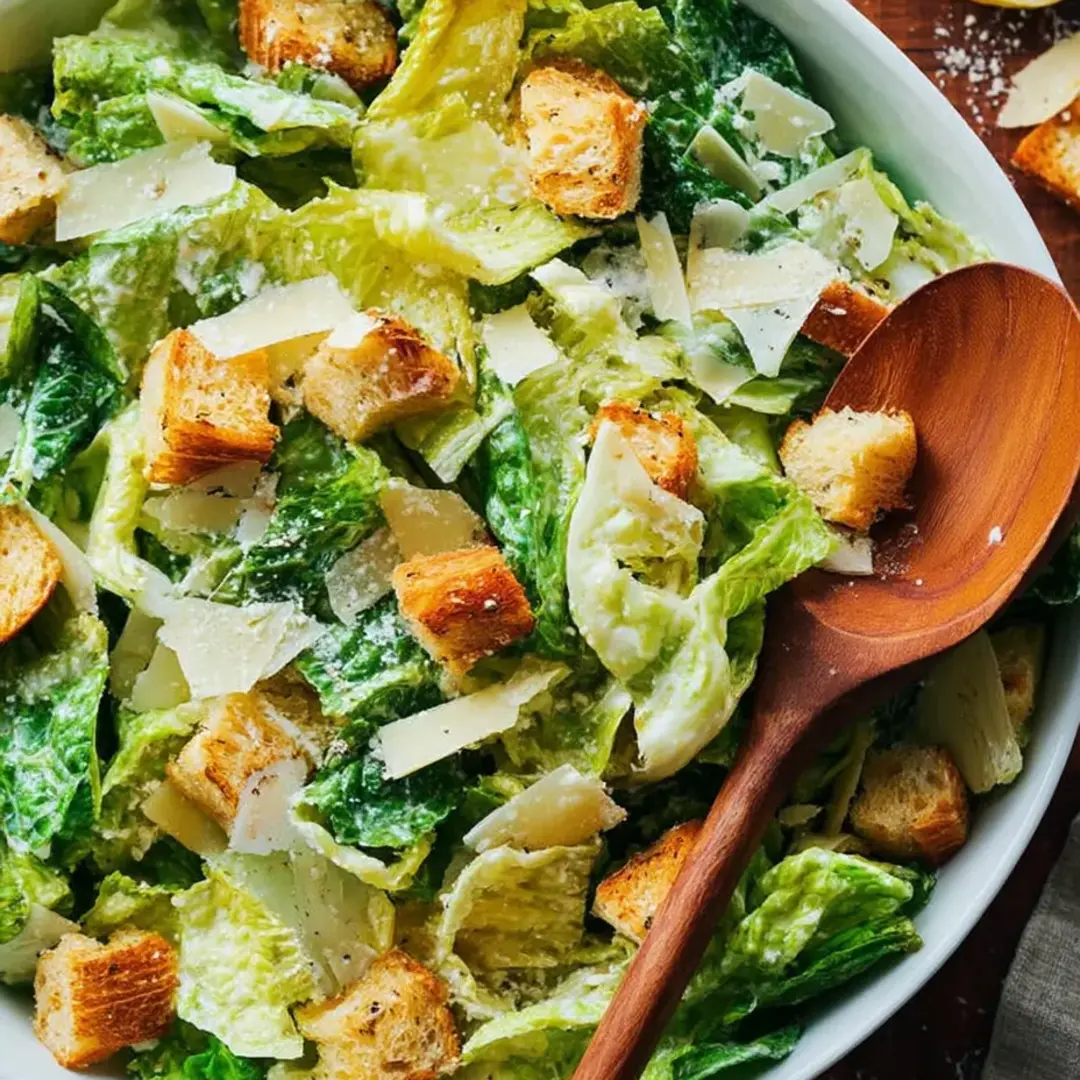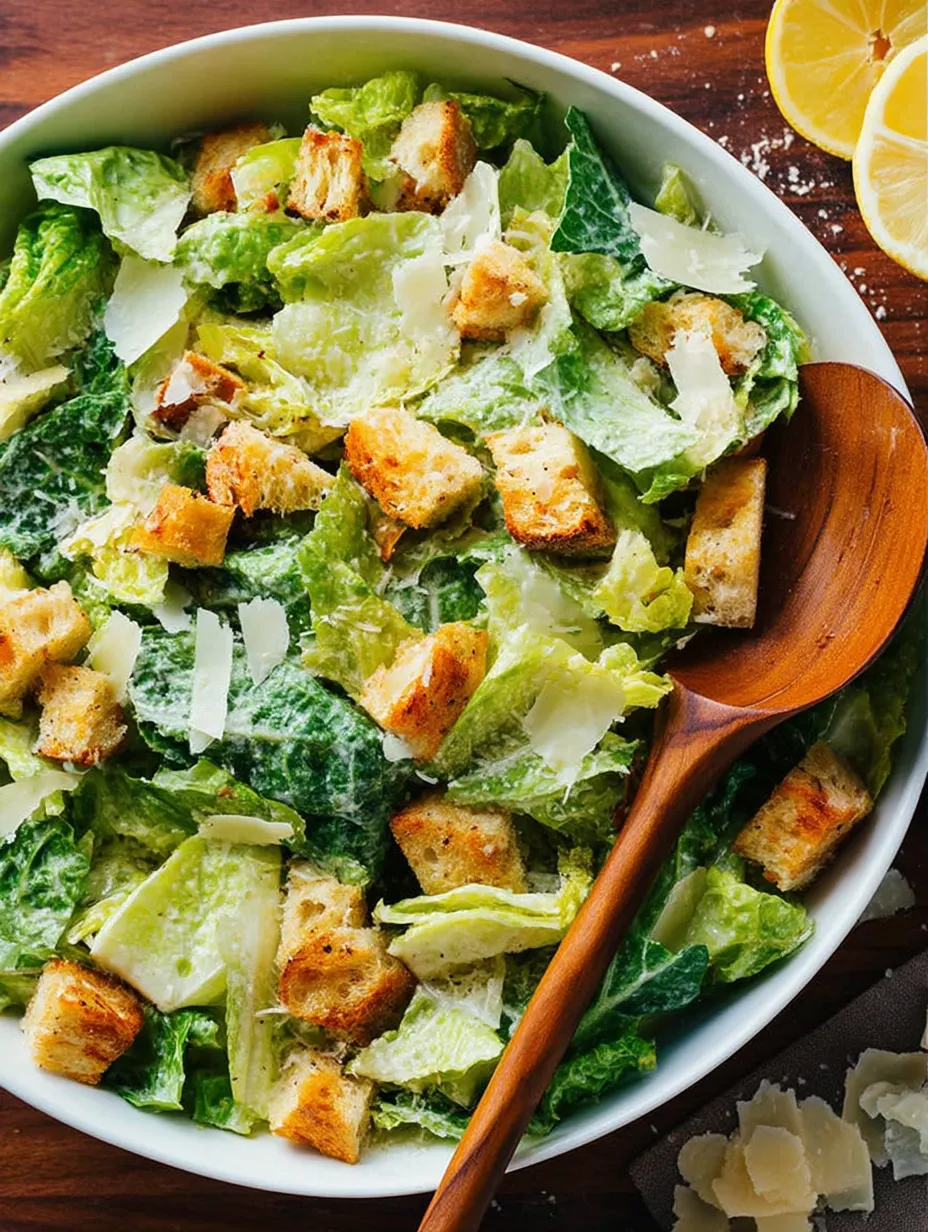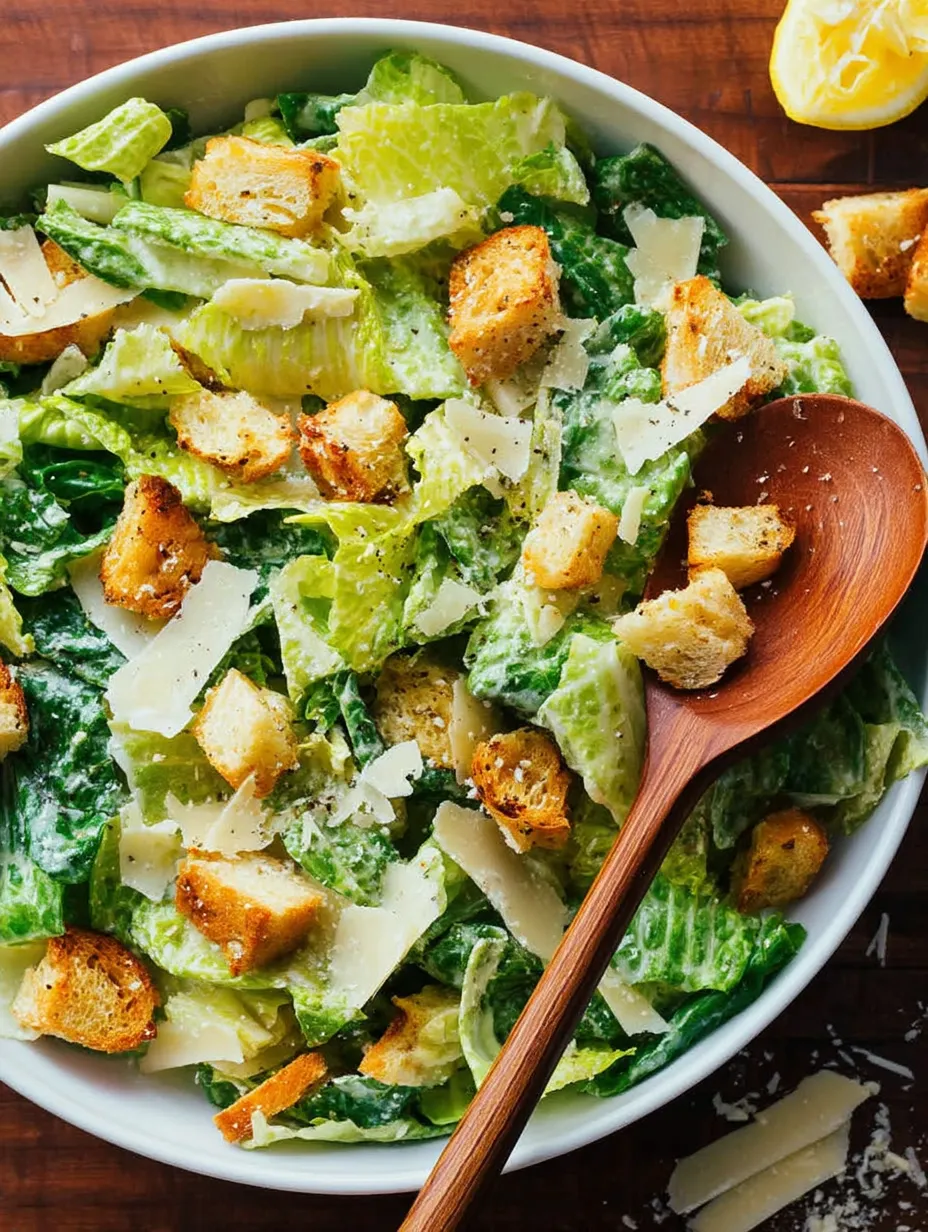 Pin it
Pin it
This classic Caesar Salad recipe transforms simple ingredients into a restaurant-quality experience with homemade croutons and a light, flavorful dressing. The combination of crisp romaine, savory parmesan, and garlicky croutons creates that perfect balance that makes Caesar salad a timeless favorite.
I first made this Caesar salad for a dinner party when I realized I had forgotten to buy a starter. The guests ended up raving about it more than the main course, and now it's my go-to impressive but effortless recipe when entertaining.
Ingredients
- For the Croutons
- French baguette: Provides the perfect texture for croutons that are crisp outside and slightly chewy inside
- Extra virgin olive oil: Gives a rich flavor that complements the garlic
- Fresh garlic cloves: Infuse the croutons with aromatic flavor
- Parmesan cheese: Creates a savory crust when baked onto the bread
- For the Dressing
- Fresh garlic cloves: Provide that distinctive Caesar punch
- Dijon mustard: Acts as both a flavor enhancer and an emulsifier for a smooth dressing
- Worcestershire sauce: Adds the umami depth traditional to Caesar dressing
- Fresh lemon juice: Brightens the entire dressing with necessary acidity
- Red wine vinegar: Balances the richness of the olive oil
- Extra virgin olive oil: Creates the silky base of the dressing
- Sea salt: Enhances all the flavors when added properly
- Black pepper: Adds a subtle heat that complements the garlic
- For the Salad
- Romaine lettuce: Offers the perfect crunch and structure to hold the dressing
- Parmesan cheese: Brings nutty, salty notes that define a proper Caesar
Step-by-Step Instructions
- Prepare the Croutons:
- Preheat your oven to 350°F while slicing your baguette. The diagonal cut creates more surface area for the garlic oil and cheese to cling to. This extra step makes a noticeable difference in flavor distribution.
- Create the Garlic Oil:
- Combine the olive oil with finely minced fresh garlic in a small bowl and let it sit for a moment. This infuses the oil with garlic flavor before it even touches the bread. Make sure your garlic is minced very finely to prevent any burning in the oven.
- Season and Bake:
- Drizzle the garlic oil evenly over the bread pieces, making sure each piece gets some love. Sprinkle with parmesan cheese and toss thoroughly to coat each piece. Spread them in a single layer without overlapping to ensure even browning. Watch carefully during the last few minutes as they can go from perfect to burned quickly.
- Make the Dressing Base:
- In a bowl, combine the garlic, dijon, Worcestershire sauce, lemon juice, and red wine vinegar. Whisk until completely smooth. This creates the flavor foundation before adding the oil.
- Emulsify the Dressing:
- The crucial technique here is to add the olive oil in a very slow, thin stream while whisking constantly and vigorously. This creates an emulsion that will keep your dressing from separating. If you pour too quickly, the dressing will break.
- Assemble the Salad:
- Use romaine that is cold and crisp for the best texture. Tear rather than cut the leaves to prevent browning on the edges. Wait until just before serving to add the dressing, croutons, and parmesan to maintain maximum crispness.
 Pin it
Pin it
I discovered the importance of the slow oil drizzle technique during a cooking class in San Francisco. The instructor demonstrated how properly emulsified dressing clings to each leaf rather than pooling at the bottom of the bowl. That single tip transformed all my homemade dressings forever.
Make Ahead Tips
The homemade croutons can be prepared up to 3 days in advance and stored in an airtight container at room temperature. If they lose their crispness, simply refresh them in a 300°F oven for 5 minutes before serving.
The dressing components can be prepared separately and refrigerated. Mix the non-oil ingredients in one container and keep the olive oil separate. About 30 minutes before serving, bring both to room temperature and complete the emulsification process. Room temperature ingredients blend more effectively than cold ones.
Ingredient Substitutions
For a lighter version, substitute Greek yogurt for half the olive oil in the dressing. This creates a creamier texture with less fat while maintaining the tangy flavor profile.
If you avoid anchovies but want that classic Caesar flavor, increase the Worcestershire sauce to 1 tablespoon. Worcestershire contains fermented anchovies and provides similar umami notes.
For a gluten free option, use gluten free bread for the croutons or substitute with roasted chickpeas tossed in the same garlic oil and parmesan mixture for a protein boost.
 Pin it
Pin it
Traditional vs Modern Caesar
The original Caesar salad, created by Caesar Cardini in Tijuana, Mexico in 1924, used whole romaine leaves that were meant to be eaten with fingers. The dressing contained raw egg yolks and whole anchovies. This modernized version maintains the classic flavors while making it more accessible for home cooks without sacrificing authenticity.
Frequently Asked Questions
- → What makes a Caesar salad special?
The combination of crisp romaine lettuce, creamy dressing, and crunchy homemade croutons makes Caesar salad stand out. Fresh parmesan cheese adds depth of flavor.
- → How do I make homemade croutons?
Slice a baguette, coat with olive oil, garlic, and parmesan, then bake at 350˚F until golden and crisp for perfect croutons.
- → What is in Caesar salad dressing?
Caesar dressing typically includes garlic, dijon mustard, Worcestershire sauce, lemon juice, olive oil, and seasonings like salt and pepper.
- → Can I use store-bought croutons for Caesar salad?
Yes, store-bought croutons can be used as a quick alternative, but homemade croutons add a fresh and personalized touch.
- → What variations can I add to a Caesar salad?
You can enhance Caesar salads with grilled chicken, shrimp, or avocado. For extra crunch, try adding nuts or seeds.
